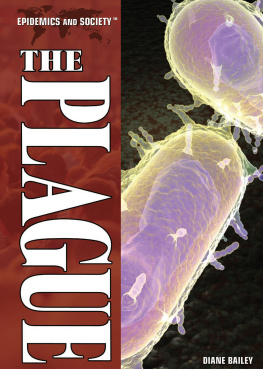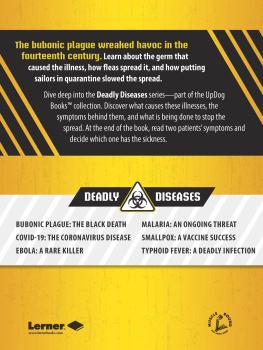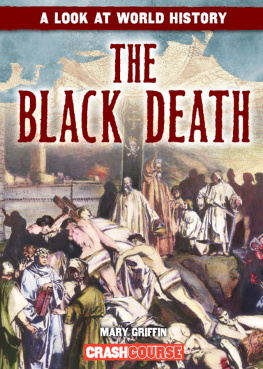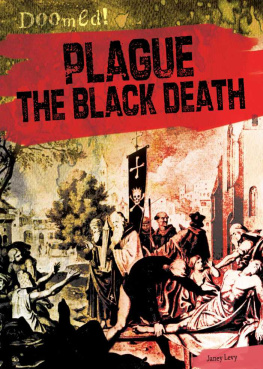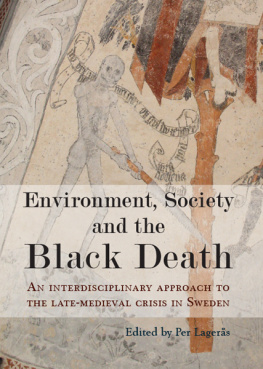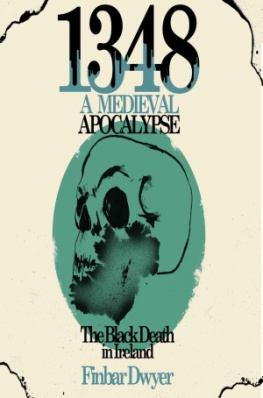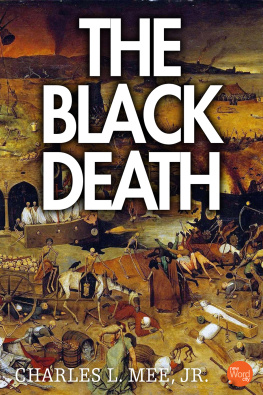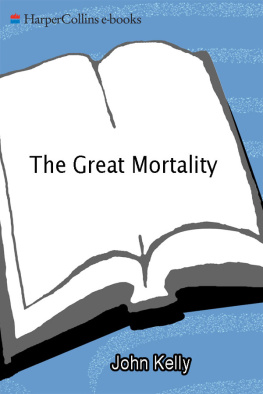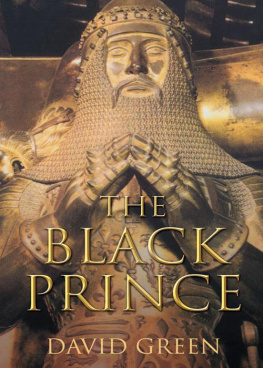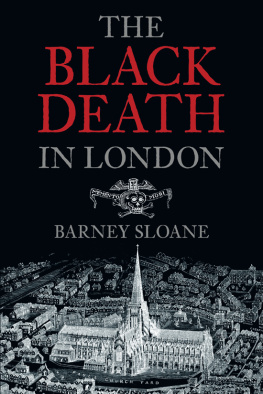
THE BLACK DEATH

 THE BLACK DEATH
THE BLACK DEATHNatural and Human Disaster in Medieval Europe

ROBERT S. GOTTFRIED

THE FREE PRESS
New York London Toronto Sydney
Copyright 1983 by The Free Press
A Division of Macmillan Publishing Co., Inc.
All rights reserved. No part of this book may be reproduced or
transmitted in any form or by any means, electronic or mechanical,
including photocopying, recording, or by any information storage
and retrieval system, without permission in writing from the
Publisher.
THE FREE PRESS
A Division of Simon & Schuster Inc.
1230 Avenue of the Americas
New York, N.Y. 10020
First Free Press Paperback Edition 1985
Printed in the United States of America
paperback printing number
16 17 18 19 20
hardcover printing number
2 3 4 5 6 7 8 9 10
Library of Congress Cataloging in Publication Data
Gottfried, Robert S.
The black death; natural and human disaster in Medieval
Europe.
Includes bibliographical references and index.
1.Black deathEurope.
I. Title.
RC178.G3G67 1983 616.5732 82-48745
ISBN-13: 978-0-029-12370-6
eISBN-13: 978-1-4391-1846-7
www.SimonandSchuster.com
Geoffrey Chaucer, The Parliament of Fowls, c. 1380
Nature, the vicaire of the almyghty lorde.
To
Philip James and Jane Louise,
the apples of my eye
 Contents
ContentsChapter 7 Disease and the Transformation of Medieval
Europe
 Acknowledgments
Acknowledgments
AS IN THE PAST, many scholars have generously given of their time to help me make up my deficiencies in interpretation and writing style. Among them are Michael Adas, Paul Clemens, James Green, John Gillis, Angeliki Laiou, Maurice Lee, William McNeill, William ONeill, Traian Stoianovich, and Joseph Strayer. An early draft of Chapter 2 was presented before the Social History Group Seminar at Rutgers University and I have benefited from the members suggestions. My editors at Macmillan, Colin Jones, Joyce Seltzer, and Eileen DeWald, consistently gave me good advice. The Rutgers University Research Council and the Charles and Johanna Busch Memorial Bio-medical Fund have supported my research, reading, and writing, and have enabled me to hire research and editorial assistants. Among these were Claire P. Griffin and Patricia R. Lanni. A grant from the American Council of Learned Societies was of great help during the last stages of writing. Without such scholarly, editorial, and financial aid I could not have written this book.
 Introduction
IntroductionIN OCTOBER 1347 a Genoese fleet made its way into the Messina harbor in northeast Sicily. Its crew had sickness clinging to their very bones. All were dead or dying, afflicted with a disease from the Orient. The Messinese harbor masters tried to quarantine the fleet, but it was too late. It was not men but rats and fleas that brought the sickness, and they scurried ashore as the first ropes were tied to the docks. Within days, the pestilence spread throughout Messina and its rural environs and, within six months, half the regions population died or fled. This scene, repeated thousands of times in ports and fishing villages across Eurasia and North Africa, heralded the coming of the greatest natural disaster in European historythe Black Death.
The Black Death was a combination of bubonic, pneumonic, and septicaemic plague strains. It devastated the Western world from 1347 to 13:51, killing 25%-50% of Europes population and causing or accelerating marked political, economic, social, and cultural changes. People were astounded, bewildered, and terrified. Father abandoned child, wife husband, one brother another, for the plague seemed to strike through breath and sight. And so they died. And no one could be found to bury the dead, for money or friendship.
The long-term effects of plague were even more profound. The Black Death was the first epidemic of the second plague pandemic, a series of cyclic outbreaks of the disease which recurred until the eighteenth century. European population declined steadily for at least a century after 1350; chronic depopulation characterized the fourteenth and fifteenth centuries. The old constitutional, governmental, and commercial institutions, the old philosophical notions, and even the systems of religious belief came under massiveand, frequently, successfulchallenge. Aristocrats and churchmen, who had dominated the preplague world through control of property, were confronted by peasants and merchants newly prosperous from trade in agricultural and industrial goods and restless with their continuing role as the underlings in Europes social structure. Preplague production, predicated on cheap, abundant human labor, was replaced by new methods that often were based on relatively sophisticated technology. In effect, the Black Death and the second plague pandemic intervened in the development of the Western world with as sudden and profound a force as any event in history.
Virtually all historians assign to the Black Death an important role in European history, but there is considerable debate on the nature, timing, and long-term effects of this role. Some scholars believe the changes the Black Death brought were short-lived, while others regard the Black Death as a, or even the, major turning point in the transition from medieval to modern Europe. Most early students of the subject subscribed to the latter perspective. In 1893, F. A. Gasquet wrote that the Black Death marked the end of the Middle Ages.
In the 1930s, perhaps influenced by contemporary events, historians began to diminish somewhat the role of the great natural phenomenon. Some Marxists, like the Russian E. A. Kosminsky, believed that plague was but a part of a general crisis in the rural economy and society which centered around Europes hierarchical social structure. Delatouche claimed that the late medieval crisis was moral rather than economic. Its roots lay in the philosophical and religious tensions of the thirteenth century.
Next page

